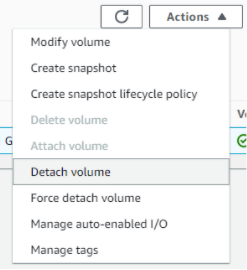AWS Backups and Recovery
Backup and Recovery
This section explains how to recover or migrate the Cado platform to a new instance.
Cado also backs up any imports to S3 which can then be re-imported later to a fresh instance, but you will need to restore the data volume if you want to recover user settings such as user logins.
If a Cado instance fails, you will need to recover and attach the data volume to a new instance. The data volume contains previously imported data as well as user settings.
You can also use this approach to migrate Cado to a new availability zone or region.
Scheduling Automated Backups of the Data Volume
Amazon EBS Snapshots are stored by AWS in Amazon S3, where it is stored redundantly in multiple Availability Zones.
You can create an EventBridge rule that regularly (e.g. daily) backs up the CadoResponse EC2 instance:


For more, see this tutorial from AWS.
Restoring the Data Volume
To perform a migration or restoration to a new instance, deploy a Cado installation and Stop the Cado EC2 Installation.
The operating system volume will be smaller (typically 10 GB). Detach the larger Data Volume (/dev/sdh seen below):


Next, restore the Snapshot backup of your old Cado installation to a Volume in the same availability zone as your new Cado EC2 Instance.
Then, simply attach the restored Data Volume to your new Cado EC2 Instance and start it.